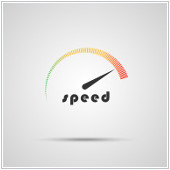 We’ve all experienced the frustration that comes with a slow-loading website. While 10 years ago, we would have waited patiently as a site loaded with all the urgency of a sloth, today’s internet surfers won’t hesitate to close the tab. Most expect at least a three-second load time, while some won’t settle for wait times over two. So how can you create a faster WordPress website that millennial users won’t close? Here are some ideas to get you started.
We’ve all experienced the frustration that comes with a slow-loading website. While 10 years ago, we would have waited patiently as a site loaded with all the urgency of a sloth, today’s internet surfers won’t hesitate to close the tab. Most expect at least a three-second load time, while some won’t settle for wait times over two. So how can you create a faster WordPress website that millennial users won’t close? Here are some ideas to get you started.
Keep WordPress and plugins up to date
While you may already know that updating WordPress and plugins will keep your website secure, you may not know that doing this also increases your site’s speed. So if you want a fast site, install those updates as soon as they become available.
Choose a host wisely
Your host can make or break your website, so before you select your host, do some research on the various options out there, particularly on their website speed and uptime.
Also, while your first impulse may be to choose shared hosting because of its low cost, be aware that it’s also going to be your slowest option in terms of speed because many websites are simultaneously relying on the same server for bandwidth.
If it’s not an option for small- or medium-sized businesses (SMBs) to use a dedicated server because of cost restrictions, their best alternative in the middle price and performance range is a virtual private server (VPS). This acts like a dedicated server in terms of functionality, but still technically uses a shared server. Regardless, using a VPS will give you a boost in speed over typical shared hosting.
Keep your site lean
The leaner your site is, the faster its speed will be. To create a lean site, be mindful of these four aspects:
- Theme – While the promise of a versatile theme can spark the imagination, actually implementing one can set you back in terms of speed. When a theme has a ton of features, the amount of code to produce those features can bog down your site. To avoid this scenario, test the theme demos to see how long it takes for them to load. If it’s more than a few seconds, look for a lighter theme that loads faster.
- Design – Similar to theme, design elements have the ability to dramatically slow down the speed of your site. Simple sites are faster, so think carefully about what ads, images, and extras you’re going to use.
- Plugins – Not all plugins are created equal; some run fast and others slow. To tell one from the other, you can use special plugins that show the impact a plugin has on your site’s load time. Another rule to follow is that fewer plugins equals more speed. So think twice before your next plugin installation spree.
- Images – Bulky images can also slow down your site. And while many raw images are around 3,000 to 4,000 pixels wide, most featured images are only 600-800 pixels wide. To reduce image weight and gain a faster site, resize them to the exact size they’ll appear on your screen.
Mind your plugins
You should stick to only the essential plugins to speed up your site. Cache plugins like W3 Total Cache and WP Super Cache can provide more speed by caching every aspect of your site and reducing its download times. Another helpful plugin is Lazy Load. It speeds up your site by loading the elements at the top of the website first, where viewers are looking when they first visit your site. Before installing the Lazy Load plugin, check your Theme Options to see if you already have it.
Create redirects sparingly
If a page on your site needs to be redirected to another page, it can really slow down your site so it’s best to use them as little as possible. And to ensure you aren’t using any unnecessary links without knowing it, use the Redirect mapper tool or similar alternatives that help you find redirects you don’t need.
If you implement some or all of the speed tips above, you’re sure to see a noticeable difference in the speed of your site. Do you need more tips to optimize your website? Do you need help with web or IT matters? We’re just a phone call away.



